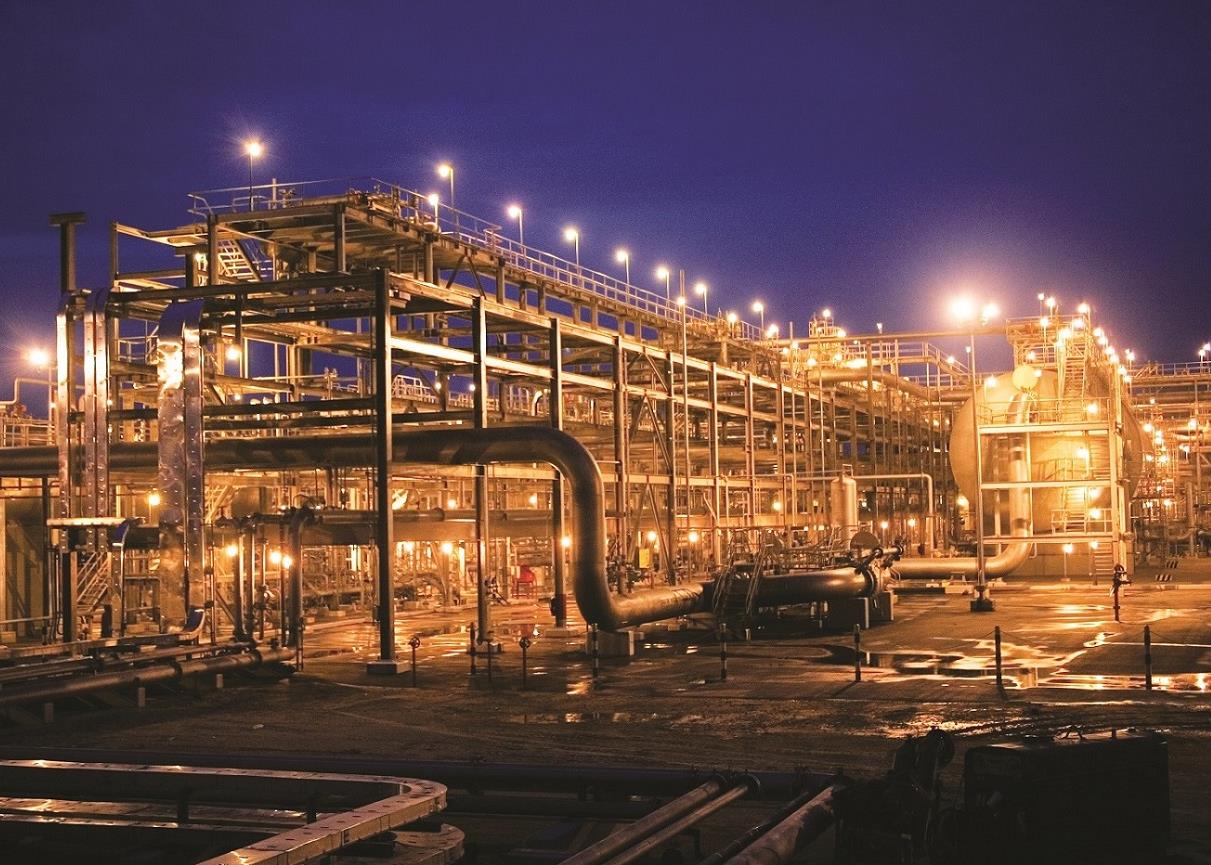


The value of contracts awarded in the Middle East and North Africa (Mena) water infrastructure sector in the first 11 months of 2022 fell 35 per cent compared to the value awarded in the full year of 2021, according to regional projects tracker MEED Projects.
However, the outlook for the industry remains robust, with an estimated $84.6bn of projects across the five sub-sectors – desalination; wastewater and sewage treatment; transmission; reservoirs; and district cooling – in the pre-execution phase.
The slowdown in awards may be attributed in part to the volume of projects under execution, which stood at $39.6bn, with Saudi Arabia accounting for 42 per cent of the total. This resulted from the record-high value of contract awards seen between 2018 and 2021 in line with the capacity procurement programmes in the region’s larger markets.
The sheer volume of projects under execution, combined with volatile demand in certain jurisdictions during the Covid-19 pandemic, may have contributed to the lacklustre performance of the market in terms of new contract signings in 2022. The global economic uncertainty, which has triggered a projects inflation, also contributed to the downtrend in awards.
The GCC states account for nearly three-quarters of the total projects in the pre-execution phase. The estimated value of planned transmission and distribution (T&D) network projects is equivalent to 31 per cent of the total, which aligns with the push by regional governments to modernise water networks to minimise water loss, connect new communities and lower the sector’s carbon footprint.
Water desalination and wastewater or sewage treatment projects each account for a similar share of roughly 28 per cent, while storage or reservoir projects account for about 10 per cent of the total.
Reservoir projects are gaining greater visibility as countries, particularly in the GCC region, aim to substantially expand their storage capacity to boost emergency response provisions.
Desalination projects
Future projects being developed with private sector participation lean towards facilities that integrate technologies and innovations that aim to reduce the water sector’s carbon footprint.
Water is crucial to the economic expansion of the region.
Fady Juez, Metito
These include building greenfield seawater reverse osmosis (SWRO) plants and converting old thermal desalination plants into SWRO, as well as the deployment of digital twins and solar photovoltaic (PV) power plants to reduce the plants’ reliance on the electricity grid.
Innovation is seen as a key to lowering the sector’s carbon footprint while continuing to expand capacity in light of population and economic growth.
“Water is crucial to the economic expansion of the region,” says Fady Juez, UAE-based managing director of Dubai-headquartered Metito.
The nascent, multibillion-dollar green hydrogen projects being planned or executed will also likely increase demand for water.
Related read: Lenders take first green hydrogen steps
Green hydrogen production relies on a process called electrolysis that splits water into hydrogen and oxygen, and is powered by renewable energy. While it is still early days to assess the impact of these early-stage green hydrogen projects on overall water demand in the region, experts say existing electrolysers require highly purified water to operate.
The advanced SWRO facility being planned in Neom, Saudi Arabia, is expected to showcase the existing and future innovations within the water desalination sector. The plant has a design capacity of 500,000 cubic metres a day (cm/d) and is expected to produce early water by 2024.
Egypt aims to procure up to 3.8 million cm/d of water desalination capacity between 2023 and 2024 as part of its long-term water strategy.
In addition to using 100 per cent clean energy, the proposed plant will use advanced membrane technology to produce separate brine streams. This will enable the production of brine-derived products, which will be developed and monetised downstream. MEED understands the $6.5bn green hydrogen plant in Neom will source water for electrolysis from this SWRO plant, which a team of Japan’s Itochu and France’s Veolia is developing.
For its part, Egypt aims to deliver dozens of renewable-powered water desalination plants to augment natural freshwater supply and reduce its dependence on the Nile River. The North African country aims to procure up to 3.8 million cm/d of water desalination capacity between 2023 and 2024 as part of its long-term water strategy that involves procuring up to 100 water desalination plants over 30 years.
Similarly, Morocco launched its first major independent water project (IWP) in 2022. The Grand Casablanca SWRO plant will have a design capacity of 548,000 cm/d and will be implemented on a 30-year build, operate and transfer basis. The scheme is the first phase of a $1bn SWRO programme announced in March 2021 by the government.
Prolific increase
The UAE has seen a prolific increase in terms of water desalination capacity procurement activities in the past 12 months. Abu Dhabi’s Emirates Water & Electricity Company (Ewec) received bids for the Mirfa 2 IWP – its second SWRO facility next to the under-construction plant in Taweelah – in June, and for the Shuweihat 4 IWP in September. The two schemes have a total combined capacity of 200 million imperial gallons a day (MIGD), or roughly 909,200 cm/d. In October, Ewec also received interest from developers for a further two SWRO plants to be developed on the Saadiyat and Hudayriat islands as a single contract.
Unsubsidised water production costs in the GCC countries appear to be increasing following a rapid decline between 2018 and 2021.
In Dubai, state utility Dubai Electricity & Water Authority (Dewa) restarted the procurement process for its first IWP in Hassyan. It received the prequalification applications for the 120MIGD scheme contract in early November 2022.
In Saudi Arabia, two IWPs – Rabigh 4 and Ras Mohaisen – moved to the procurement stage in 2022. Shuaibah 3, which was negotiated between Riyadh-based utility developer Acwa Power and the state offtaker, was also awarded.
The planned IWPPs in Kuwait and Qatar likewise involve the development of significant water desalination capacity, although the requests for proposals (RFPs) for those projects are understood to have an open prescription in terms of desalination technologies.
Rising water cost
Based on the bids Ewec received over the second half of 2022, unsubsidised water production costs in the GCC countries appear to be increasing following a rapid decline between 2018 and 2021. Awarded between 2018 and 2019, the Rabigh 3 and Shuqaiq 3 IWPs in Saudi Arabia and the Taweelah IWP in Abu Dhabi are being developed on a levelised water cost of between $cents 50 and $cents 53 a cubic metre ($c/cm).
This cost dropped to $c41/cm for Jubail 3A and $c42/cm for Jubail 3B in 2021. However, this year, a team led by France’s Engie offered a low bid of $c48/cm for Mirfa 2 in Abu Dhabi, while South Korea/Spain’s GS Inima offered a low bid of
$c56/cm for Shuweihat 4.
Related read: Water cost swings higher
In addition to rising interest rates, other important factors that influence levelised water costs are the cost of power; cost of materials and engineering, procurement and construction; and the length of the water purchase agreements, which differs between jurisdictions.
These factors make it difficult to predict whether developers will price the region’s next IWPs higher or lower compared to the prices seen for Mirfa 2 or Shuweihat 4.
Wastewater plants
Except in a few jurisdictions such as Saudi Arabia and Egypt, and unlike many seawater desalination facilities, the construction and operation of wastewater or sewage treatment plants still remain within the remit of state utilities and operators for the most part.
Abu Dhabi Sewerage Services Company (ADDSSC) tendered the design, build and operate contract for the emirate’s first treated sewage effluent (TSE) polishing plant in 2022. The plant will treat sewage water for more advanced applications such as agriculture. It has a design capacity of 700,000 cm/d expandable to 950,000 cm/d.
Meanwhile, bid evaluation is under way for the first major sewage treatment facility in Erbil, Iraq, which is being funded by Japan's Official Development Assistance programme. The estimated $780m project involves the construction of a wastewater treatment plant with a capacity of 210,000 cm/d.
In Kuwait, two major schemes are under way for the upgrade and development of the North Kabd and the South al-Mutlaa sewage projects, which together have a budget of about $1.2bn.
Egypt is also looking to expand Cairo’s Gabal al-Asfar wastewater treatment plant. Stage 3 of the project includes the construction of a 500,000-cm/d plant, which is expandable to 650,000 cm/d.
Saudi Water Partnership Company (SWPC) has tendered the first scheme within the third batch of its independent sewage treatment plant (ISTP) programme. The Al-Haer ISTP has a design capacity of 200,000 cm/d. Four other projects are planned within the programme, including facilities located in Riyadh East, Khamis Mushait, Hadda and Arana.
The post-Covid economic recovery along with better-than-expected oil prices, particularly in the GCC states, may buoy overall water contract awards over the next 12-24 months. The continued decoupling of water from power production and increasing treated sewage effluent adoption also bode well for the decarbonisation strategies of the Mena states.
You might also like...

Masdar and Etihad plan pumped hydro project
19 April 2024

Ewec signs Ajban solar PV contract
19 April 2024

Red Sea Global awards Marina hotel infrastructure
18 April 2024
A MEED Subscription...
Subscribe or upgrade your current MEED.com package to support your strategic planning with the MENA region’s best source of business information. Proceed to our online shop below to find out more about the features in each package.











